Showing 193–204 of 1182 results
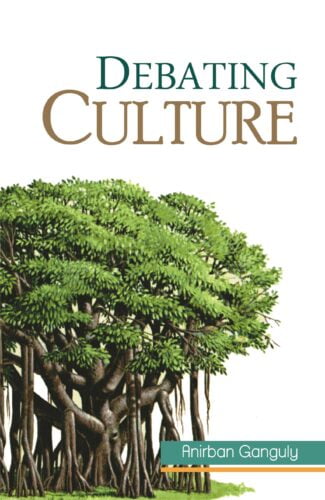
This book talks about the vision of our cultural thought-leaders like Ananda Coomaraswamy, Sri Aurobindo, Swami Vivekananda, Sister Nivedita, John Woodroffe, Syamaprasad Mookerjee and K.M. Munshi in making India a culturally strong nation. They remind us of our unique past and time-tested virtues and values, and the criticality of sustaining them while being modern in many ways
Barring the political agenda, the vital forces associated with India’s nationalist movement were moral, literary and artistic. Many cultural protagonists were vocal in saying that the regeneration of our society could happen through the revival of our arts and culture, not by politics and economics alone. This impulse was quite visible in cultural thought-leaders like Ananda Coomaraswamy, Sri Aurobindo, Swami Vivekananda, Sister Nivedita, John Woodroffe, Syamaprasad Mookerjee, K.M. Munshi and Jawaharlal Nehru. Rabindranath Tagore made a strong case for developing a complete and moving orb of Indian culture.
This book delves deep into the vision of these thought-leaders in making India a culturally strong nation, and warns us in different ways against becoming insularly modern. These personalities remind us of our unique past and time-tested virtues and values, and the criticality of sustaining them while being modern in many ways. They exult in our past and call upon us to be the torch-bearers of this legacy.
This volume, while doing an in-depth study of these Indian cultural activists, laments on the lackadaisical attitude of the leaders of Independent India in maintaining and promoting our art forms and long-revered culture. A renewed effort in rejuvenating our culture is the need of the hour, especially when its moorings seem to be loosening and its symbols diluting. It is an irony to call for the recognition of Indian culture in India!

This book talks about the vision of our cultural thought-leaders like Ananda Coomaraswamy, Sri Aurobindo, Swami Vivekananda, Sister Nivedita, John Woodroffe, Syamaprasad Mookerjee and K.M. Munshi in making India a culturally strong nation. They remind us of our unique past and time-tested virtues and values, and the criticality of sustaining them while being modern in many ways
Barring the political agenda, the vital forces associated with India’s nationalist movement were moral, literary and artistic. Many cultural protagonists were vocal in saying that the regeneration of our society could happen through the revival of our arts and culture, not by politics and economics alone. This impulse was quite visible in cultural thought-leaders like Ananda Coomaraswamy, Sri Aurobindo, Swami Vivekananda, Sister Nivedita, John Woodroffe, Syamaprasad Mookerjee, K.M. Munshi and Jawaharlal Nehru. Rabindranath Tagore made a strong case for developing a complete and moving orb of Indian culture.
This book delves deep into the vision of these thought-leaders in making India a culturally strong nation, and warns us in different ways against becoming insularly modern. These personalities remind us of our unique past and time-tested virtues and values, and the criticality of sustaining them while being modern in many ways. They exult in our past and call upon us to be the torch-bearers of this legacy.
This volume, while doing an in-depth study of these Indian cultural activists, laments on the lackadaisical attitude of the leaders of Independent India in maintaining and promoting our art forms and long-revered culture. A renewed effort in rejuvenating our culture is the need of the hour, especially when its moorings seem to be loosening and its symbols diluting. It is an irony to call for the recognition of Indian culture in India!

Indian academic self-understanding of the day is highly influenced and mediated by the Western culture and its understanding of Indian civilization. The political agenda of the colonizer has overshadowed the legitimacy of Indias history and culture. This development poses numerous doubts about its authenticity and credibility. This volume addresses this and many a related issue.
The present Indian academic self-understanding of its history and culture is largely Western in origin. This Western intellectual enterprise, however, went hand in hand with a Western political enterprise, i.e. the colonization of India. This raises the question: To what extent, if any, did the two developments influence each other? It also raises another question: To what extent did Wests cultural presuppositions influence its understanding of Indian civilization?
The central epistemological issue which these questions raise is the following: What significance does the fact that the self-understanding of a culture is mediated by that of another culture, over which it was culturally and politically dominant, possess for the votaries of the culture whose self-understanding has thus been mediated in this fashion?
This question is not merely of historical but also of contemporary interest, for in an increasingly globalizing world, in which power is unevenly distributed at various levels, the self-understanding of all cultures is likely to be influenced by how they are being presented by other cultures. Furthermore, in such a world, shifting political alliances may generate new intellectual configurations, whose legitimacy may require constant examination. The essays in this book address these and similar issues.

This book discusses the manner in which Wittgenstein and Husserl pursued the concept of descriptive philosophy in their own philosophical set-up. It analyses the hazards arising in the way of faithful description and with the idea of faithful description itself.
Husserl and Wittgenstein broke off from the traditional attitude towards philosophy; they presented no ideologies, systems or theories but aspired to describe what one sees. In the present book, Dr. Krishna Jain discusses the manner in which they pursued the concept of descriptive philosophy in their own philosophical set up and also analyses the hazards which inevitably arise in the way of faithful description and with the idea of faithful description itself.
Jain, Bauddha and Ajivaka belong to Sramanic tradition. Ajivakas were firm believers of determinism (Niyativada). Determinism, in philosophy, implies that all events, including moral choices, are completely determined by previously existing causes. But when we talk about niyati as per Jain perspectives, there is a doctrine of karma. According to karma theory, an individual’s present condition is determined not by any absolute principle but by his own actions performed either in his past lives or in this life. By freely choosing the right course and following it faithfully, he could improve his destiny and ultimately win salvation.
But Jainism does not totally reject the doctrine of Niyativada. It talks of five co-factors (panca-samavaya), i.e. kala, svabhava, niyati, purvakrta and purusa. The first cause of the universe is false when each of the five factors is taken singly but true when they are considered jointly. Buddhist text Digha Nikaya talks of two types: (1) Theistic determinism (2) Karmic determinism. However, Buddha does not teach that we have complete freedom or that we are determined, but that our will is conditioned or limited to a greater or lesser extent.
This volume contains ten selected papers that present the philosophical discussion on determinism in Srmananic traditions, particularly in Jainism.
Deviant Sex and Buddhism discusses deviant sexual practices recorded in Pali Sutta and Vinaya texts categorizing into normal, pathological and sociological. In Buddhist spirituality and philosophy, like in other religions, sex within the institution of marriage is admissible, while all other forms of sexual practices are immoral and denounced. A sexual act violating the norms of chastity and celibacy within the Buddhist community comes to be identified as a deviant sexual act.
At the backdrop this positioning, this volume engages one in a deep study of what were sensuality and sexuality in early Buddhism, Buddhist attitude to human body, and the definition of celibacy, chastity and normal deviant sexual behaviour along with the nuances of the other two forms of deviant sexual behaviour, i.e. pathological and sociological. Going by the Buddhist philosophy, any deviant sexual behaviour is connected with the issue of human suffering. Twofold sexual conformity – complete sexual abstinence and sex only with one’s own spouse – is emphasized while decrying all non-conforming sexual practices and deciding on a range for sexual acts including homosexual relationship.
This scholarly work should invigorate the interests of many researchers and academicians to take up further studies and researches on the topic, which has not yet been exposed to the literary world at length.

This work focuses on the various facets of queer activism, using different art forms like cinema, photography and literature to lay bare the queer and spatial politics of contemporary India. The key issues that have been explored through this book are necropolitics, issues surrounding sex-reassignment surgery (SRS), trans-feminism, trans-misogyny, translation of the queer geographies including deathscapes, AIDs citizenship and queer flânerie.
Representation of non-normative sexualities is still a tantalizing dream in India, even within the oblique and supposedly more liberal platforms like art and literature. Catering to this need, this study focuses on the exploration of the deviant sexualities in cinema, photography and literature, specially in the Indian context. Unfortunately, even within the queer artistic explorations, hijras have not been much represented and therefore the first part of the book aims to excavate the multiplicity of the transgender lives by analysing various art forms, having transgender cinema and hijra photographic series as the major thrust areas. These tales of plain subjugation hide convoluted issues like necropolitics, overlap among sports, gender identity and nationalism, crazy-queen syndrome, pansexuality, transfeminism and transmisogyny.
The second part of this book deals with the contemporary gay and lesbian literature and how a specific kind of spatial appropriation is visible there. Through these artistic works, there is an attempt to excavate the specific Indian queer spatial experiences which are quite different from the visibility-centric coming out narratives of the West. As opposed to perceiving invisibility only as a monolithic technique of erasure, these works demonstrate that secrecy and camouflage are also strategies to combat the insidious effects of homophobia. And since Indian spatial configuration produces many homosocial spaces, the unique coexistence of homo and hetero desires is a specific feature of Indian ethos. Thus, the mutually symbiotic relationship between art and emancipatory politics is quite evident from the detailed discussion on various art forms that depict queer lives. The key issues that have been explored through this book are necropolitics, issues surrounding sex-reassignment surgery (SRS), transfeminism, exploration of queer geographies including death scapes, AIDs citizenship and queer flânerie. It indubitably legitimizes somewhat the role of art in queer politics at a fundamental level.
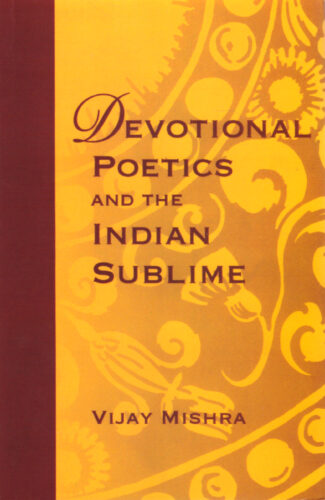
Studying European theories of the sublime particularly against contemporary critical uses of the term, the study maintains that the Brahman is one of the most fully developed sublimes. It analyses the relationship of a devotee, with his God when the latter is incapable of representation.
The last two decades of the twentieth century have been marked by an immense revival of interest in the sublime, yet past studies have used Western texts as their archives. This book dramatically shifts the focus by examining a major instance of an Indian sublime: the Brahman. Mishra examines European theories of the sublime, reads them off against contemporary critical uses of the term (notably by Lyotard and Paul de Man) and proposes that the Hindu Brahman constitutes an instance of one of the most fully developed of all comprehensive theory of both the Indian sublime and Indian devotional verse. The book offers a highly original interpretation of one fundamental problem in Indian cultural history: how does a devotee establish a relationship with God (Brahman) when God is ultimately incapable of representation? Mishra brilliantly exposes this problem by introducing the theme of the sublime and shows how the problem has been confronted across a range of central Hindu texts covering a large panorama of historical time and several Indic languages.
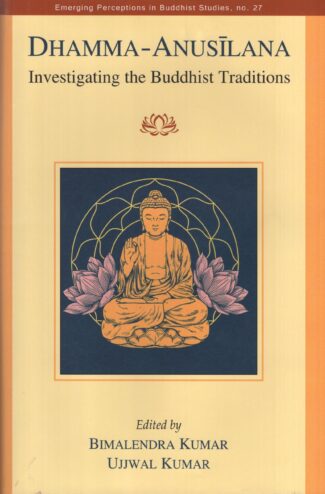
This book is an anthology of seventeen cerebral articles from well-known Buddhist scholars associated with major universities across the globe deliberating many a topic associated with Buddhist religion and its philosophies as part of our constant striving to understand the fundamental nature of what the Buddha wanted us to realize.
There have been serious attempts to understand the Buddha and his teachings since the inception of Buddhism some 2,600 years ago. All through the history of Buddhism, scholars were constantly striving to understand the fundamental nature of what the Buddha wanted us to realize. This book is an anthology of seventeen cerebral articles from well-known Buddhist scholars associated with major universities across the globe. In four parts – Meditation; Personality and Position; Dharmakirti and Persons; and Principles, History and Grammar – it highlights some pertinent topics associated with Buddhism and its legacy.
Part I discusses the diverse dimensions of meditation, dedicating itself to the kiriya (action) aspects of Buddhism. Part II is an attempt to delineate and study the major branches of Buddhism. Part III deliberates on the contributions of Dharmakirti and Rahula Sankrtyayana to the Buddhist philosophy along with the concept manusa-panatipata and how the revelation of reality of human experience by analysis helps a person to achieve wisdom in the light of Majjhima Nikaya Anathapindikovadasutta. Part IV has papers on different philosophical and applied concepts of Buddhism.
This volume thus should benefit one in understanding many an aspect of Buddhism vis-à-vis its enormous corpus of literature and teachings. It should highly benefit the students of Buddhism and for those who are keen to fathom deep into the myriad topics of Buddhist philosophy and teachings.
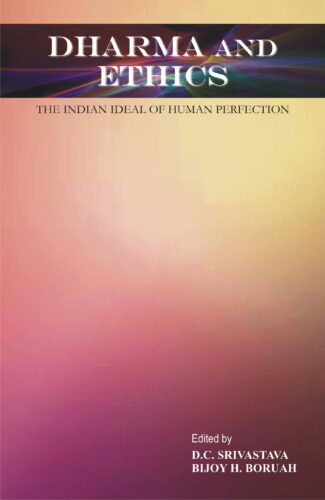
The volume consists of fourteen essays written by scholars of diverse disciplinary discourses, such as Philosophy, Political Science, Literature, Economics and Classical Studies (Sanskrit) and presented to the serious reader as an Indian picture of the virtuous life set against the larger background of virtues that are woven into the fabric of Western civilization.
Set against the background of the contemporary popularity of virtue ethics in the West, this book projects a unified picture of Indian Virtue Ethics by highlighting two interrelated purposes. First, it canvasses the point that Indian ethics, both in its classical and its modern shapes, is basically founded upon the cultivation of those attitudes that conduce to the realization of a virtuous self. Second, it draws out the various facets of virtues, traditional and modern, which bear a specifically Indian character. With these two aspects combined into a complex whole, this work manages to present itself as a coherent set of ethical ideas with a distinctively Indian identity.
The book consists of fourteen essays written by scholars belonging to diverse disciplinary discourses: Philosophy, Political Science, Literature, Economics and Classical studies (Sanskrit). As such, it presents to the serious reader a multi-perspectival Indian image of what it is like to lead a virtuous life and to aspire for human perfection.
Central to the Indian ideal of human perfection in the Indian tradition is the place of dharma in the overall scheme of life. While this centrality of dharma is recognized in the essays included in this book, the virtue-ethical interpretation of this central concept attempted in these essays is marked by a broader understanding of the concept adapted to the imaginative elucidation of the idea of a dharmic or virtuous life.
It is strongly believed that this book will be an eye-opener to scholars in Philosophy, Religion and Cultural Studies. It promises to set a new standard of ethico-philosophical scholarship by expanding the horizon of virtue ethics as it appears in present Western moral philosophy.
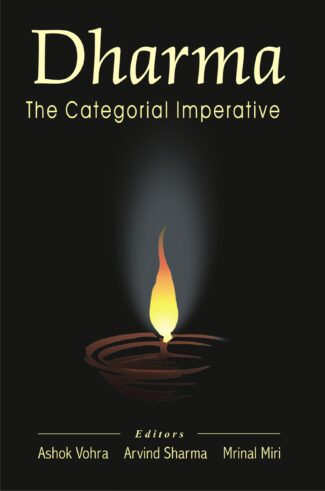
This book presents an in-depth study of the concept of dharma and acknowledges that Indian reality encompasses the elements of religion and dharma. It explores an alternative understanding of Indian civilization, independent of Western presuppositions as well as some contemporary issues relating to women and the dilemmas faced by the Indian diaspora.
Each stable culture and major civilization of the world consists of a distinct material base and a distinct ideational structure and has an inherent mechanism of striking its own equilibrium between the two. In the Indian tradition dharma is the balancing force. Religion and ideology are literally treated as synonymous with the Sanskrit word dharma. But dharma differs from religion in not being exclusive, and from ideology in possessing a transcendental dimension. The papers in this volume acknowledge that neither the word religion nor dharma can be discarded while looking at the Indian reality. They address themselves to the question: To what extent does the continued use of the concept of religion in the Indian context reflect reality, and to what extent does it distort or misrepresent its dhàrmic reality? Given India’s historical and the present existential situation these papers explore the question: Is an alterative understanding of Indian civilization possible, independent of Western presuppositions? The articles in the book present an in-depth study of the concept of dharma and its relation to the other purusharthas artha, kama and moksha, as well as with society, science, religion, Ayurveda and secularism. Relying mainly on the Vedas, epics, Manusmriti and the writings of Plato, Vivekananda, Gandhi et al., these papers explore some contemporary issues relating to women (stri-dharma) and the dilemmas faced by the Indian diaspora, especially in the UK and the US. These discussions have an appeal for a general reader as well as for scholars of Philosophy, Religion, Women’s Studies, Modern India and Sociology.
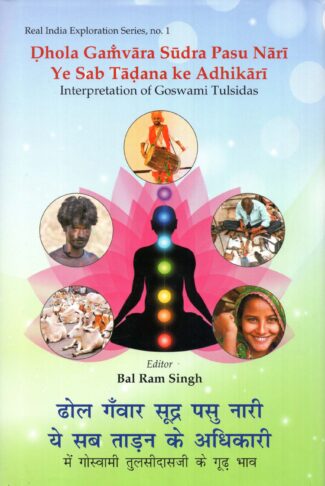
This book presents a proper meaning of the Ramcharitmanas chaupai, Dhola gamvara sudra pasu nari , ye sab tadana ke adhikari using the actual meaning of the word, tadana, in Avadhi language, and by delving into the deep philosophical references of the Pancabhutas, ether, air, fire, water, and earth of the Samkhya and Vaishesika darshanas, as intended by Goswami Tulsidas.
This book presents a proper meaning of the Ramcharitmanas chaupai, Dhola gamvara sudra pasu nari , ye sab tadana ke adhikari using the actual meaning of the word, tadana, in Avadhi language, and by delving into the deep philosophical references of the Pancabhutas, ether, air, fire, water, and earth of the Samkhya and Vaishesika darshanas, as intended by Goswami Tulsidas.
| There are no products |